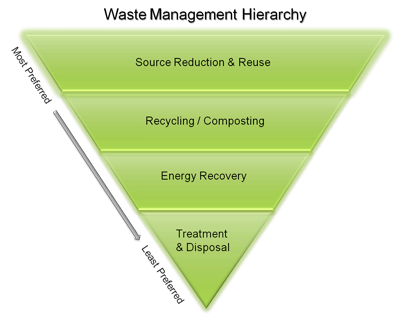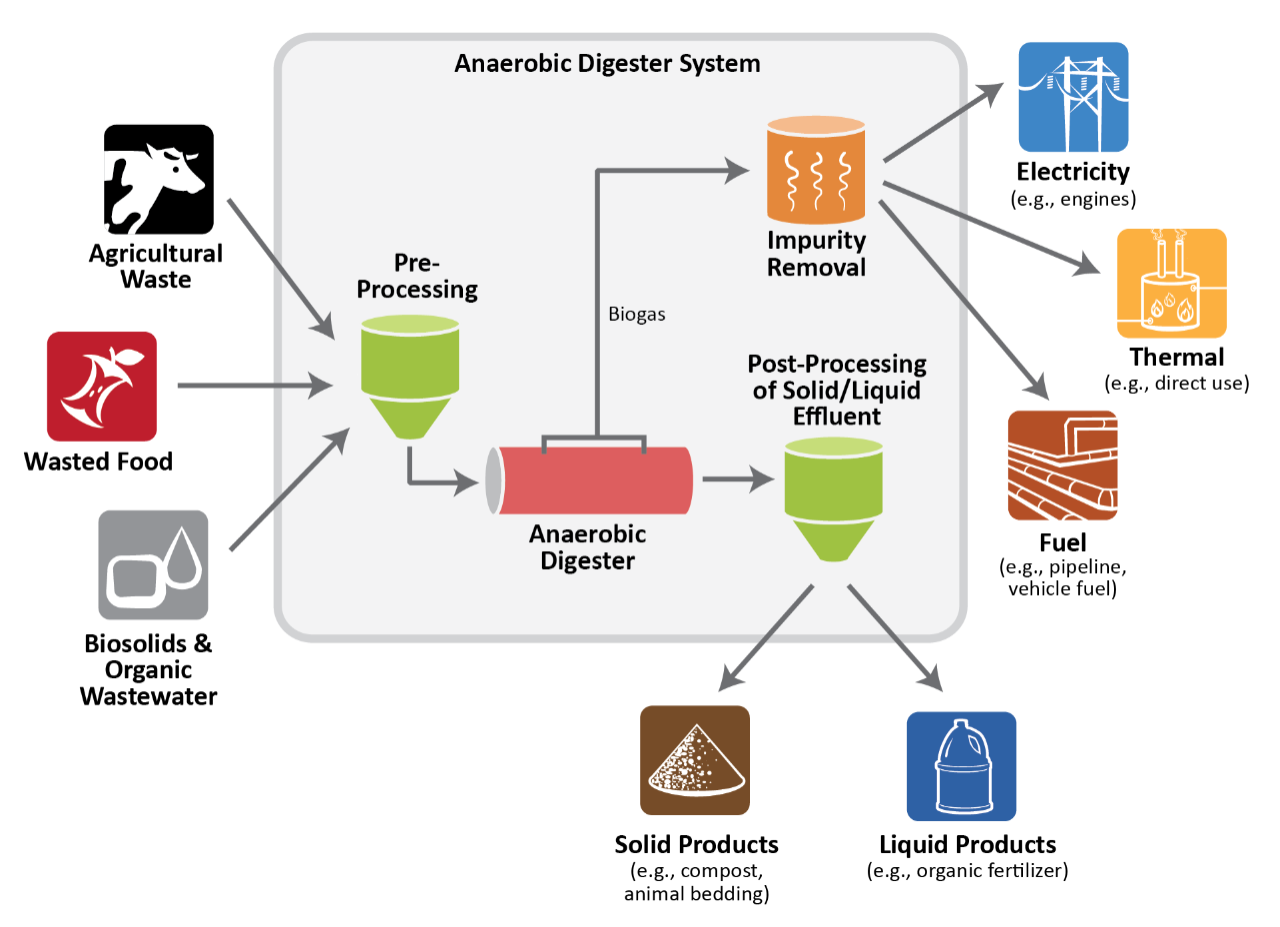Anaerobic Digestion
What is it?
According to the American Biogas Council, “Anaerobic digestion is a series of biological processes in which microorganisms break down biodegradable material in the absence of oxygen.” The products of this process are biogas, liquid digestate, and solid digestate. A similar process occurs naturally in marshes and wetlands, producing swamp gas. The organic fraction in landfills also breaks down primarily anaerobically, producing landfill gas. Biogas, swamp gas, and landfill gas all contain methane, carbon dioxide, and hydrogen sulfide, but the percentages vary among them.
Anaerobic digestion (AD) systems are designed to capture the biogas produced from this breakdown and produce energy. AD’s place on EPA’s Waste Management Hierarchy depends upon the final disposition of the digestate. If the digestate is beneficially reused (e.g. composting, land application), AD would reside in the “Recycling/Composting” category. If the digestate is ultimately landfilled however, AD would reside in the “Energy Recovery” category.
How does it work?
It's a Biological Process, and there are 4 stages: Hydrolysis, Acidogenesis, Acetogenesis, Methanogenesis.
- Hydrolysis - the first step in the conversion of organic material to biogas. In this stage, certain bacteria break down organic polymers like carbohydrates into simple sugars so that the next group of bacteria can further process the material.
- Acidogenesis - the second step in the conversion of organic material to biogas. In this stage, certain bacteria called acidogenic bacteria convert the simple sugars and amino acids into carbon dioxide, hydrogen, ammonia, and organic acids.
- Acetogenesis - the third step in the conversion of organic materials to biogas. In this stage, certain bacteria called acetogenic bacteria convert the organic acids into acetic acid, carbon dioxide, and hydrogen.
- Methanogenesis - the final step in the conversion of organic materials to biogas. In this stage, certain single-celled organisms called methanogens convert the intermediate products produced in the preceding stages into biogas (primarily methane and carbon dioxide). The solid and liquid leftover from this process, digestate, consists of material that the microbes cannot use as well as dead bacteria.
Various kinds of Feedstocks can be used in anaerobic digestion:
Manure
Municipal wastewater
Industrial wastewater
Municipal solid waste (MSW)
Fats, oils, and greases
Food Scraps
Sludges
Digester Technologies
Digesters can be classified as “wet” or “dry” based on whether the material can be pumped (“wet”) or stacked (“dry”). Materials with high solids content (20-40% solids) can often be processed in either system. Some “dry” systems can handle as much as 50% solids. Materials with low solids content (less than 20% solids) can only be processed in “wet” systems. “Wet” systems are far more common in the US, but several “dry” systems have been installed in recent years to produce energy on materials that have been typically composted. Regardless of design, all AD systems adhere to the same principles.
| Contacts |
|---|
| Robert Wadley 615-741-4907 Robert.Wadley@tn.gov |

